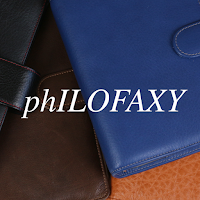- Make
- Model
- Size
- Colour
Please leave a comment below.
 I hope you have had a good weekend.
I hope you have had a good weekend. What questions or discussion points have you got for us today?
What questions or discussion points have you got for us today?



|

|

|

|
I have been keeping a journal now on a regular basis since 2013. I tried before then to keep a journal in my Filofax, but it wasn't so successful, and I would frequently forget to write anything in each day.
With my hopeless short term memory if a couple of days pass without writing anything down, then the details will be lost.
I started using a Quo Vadis Daily 21 page per day planner as my journal in 2013. It is a bit of an overkill for my average level of writing each day. But it keeps things tidy and well laid out.
Each day has the day and date in six languages the first two being English and French. The others are Italian, German, Spanish and Dutch.
Each page has some timings against the ruled lines, but I tend to ignore the exact timings.
It is close to A5 in size, slightly narrower and I keep it in a Van Der Spek Codex cover. I've done reviews of these here.
If you are just getting started with journalling or you want to improve your style of journal keeping. I recommend picking up a copy of Ray Blakes book 'Journalling School: A Short Course in Personal Journalling' It helped me a lot and I need to re-read it again.
It was also available as a series of blog posts:
There are plenty of other on-line resources on Journal Writing.
This is what my stack of journals from 2013 to 2024, 2025 being in my VDS cover and still being written in each day.
Do you journal each day?
 It is time to enjoy a few blog posts from around the internet, grab a drink and make yourself comfortable for our weekly round-up.
It is time to enjoy a few blog posts from around the internet, grab a drink and make yourself comfortable for our weekly round-up.Creating a Morning Routine in Your Planner
Mornings set the tone for the entire day, but without structure, they can slip away in a blur of distraction and chaos. At least in my house they can! Your planer is the perfect tool to design (and stick to) a morning routine that supports focus, calm, and productivity.
Step 1: Define Your Ideal Morning
Start by asking yourself questions like, “What time do I want to wake up?” and “What are a few things I’d like to do before starting work or my daily responsibilities?” Some common morning routine things might include hydration, morning pages or journaling, planning your day, getting some deliberate movement in before you start your day, setting intentions or reading something inspiring.
Step 2: Time Block It
Use your daily or weekly pages to time-block your morning routine. Even a simple structure like this works:
6:00–6:15am | Water + Stretching |
6:15–6:45am | Tea + Morning Pages |
6:45–7:00am | Quick Planner Review |
7:00-7:30am | Healthy Breakfast |
Writing it down and seeing it on the page helps you stay accountable (and helps you notice what’s realistic and what isn’t!). I like to put my morning routine on a Compass Card from Franklin Planner in my Pouch Page Marker because the daily pages I use don’t start early enough, plus this way it’s always on my current day’s page and I don’t have to re-write it every day.
Step 3: Use Your Planner Daily
Every morning, open your planner and:
This creates a sense of control before the day even begins, and with just 15–20 minutes and your trusty planner, mornings can become a calm, productive foundation for everything that follows for the day.
As always on Fridays, feel free to discuss whatever you’d like related to ring planners.
 I hope you have had a good weekend.
I hope you have had a good weekend.